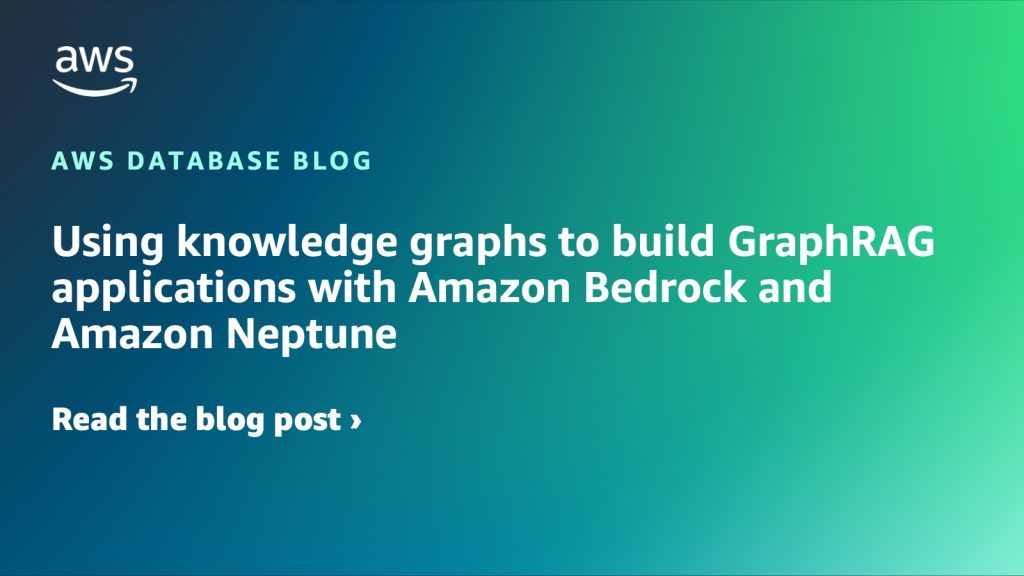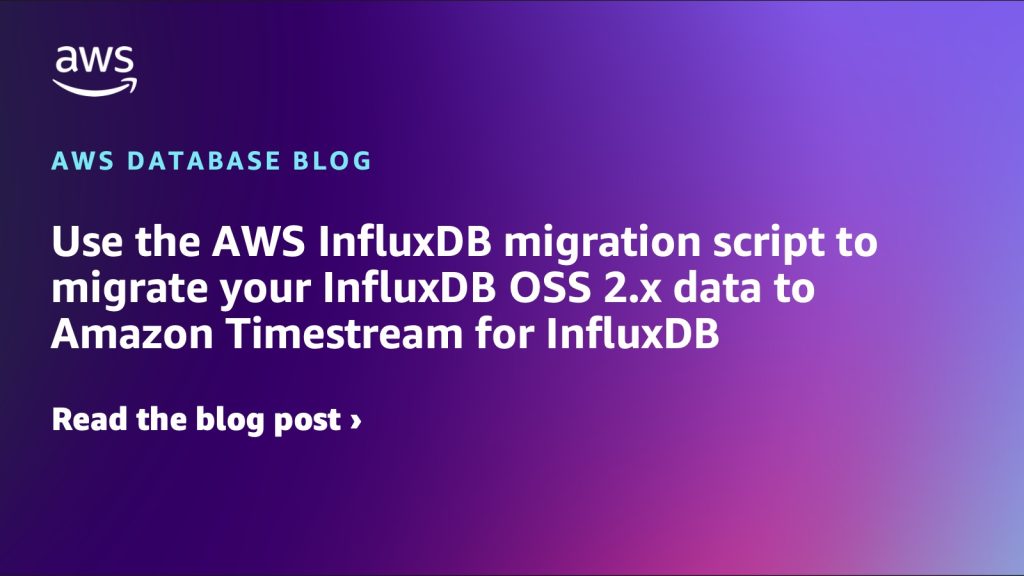AWS Database Blog
Using knowledge graphs to build GraphRAG applications with Amazon Bedrock and Amazon Neptune
Retrieval Augmented Generation (RAG) is an innovative approach that combines the power of large language models with external knowledge sources, enabling more accurate and informative generation of content. Using knowledge graphs as sources for RAG (GraphRAG) yields numerous advantages. These knowledge bases encapsulate a vast wealth of curated and interconnected information, enabling the generation of responses that are grounded in factual knowledge. In this post, we show you how to build GraphRAG applications using Amazon Bedrock and Amazon Neptune with LlamaIndex framework.
How Infosys used Amazon Aurora Zero-ETL to Amazon Redshift for near real-time analytics and insights
In this post, we talk about how Infosys redefined the ETL landscape for their product sales and freight management application using Aurora zero-ETL to Amazon Redshift. We also explain our experience with the old process and how the new zero-ETL integration helped us effortlessly move data into a Redshift cluster for analytics along with metrics to monitor the health of the integration.
Introducing smaller capacity units for Amazon Neptune Analytics: Up to 75% cheaper to get started with graph analytics workloads
In this post, we show how you can reduce your cost by up to 75% when getting started with graph analytics workloads using the new 32 and 64 m-NCU capacities for Neptune Analytics. Many commonly used sample datasets can fit on 32 or 64 m-NCU, allowing you to work with the same data but at a lower cost. We also discuss how to monitor the graph size and resize m-NCUs without downtime.
Implementing a fall forward strategy from Amazon RDS for SQL Server Transparent Data Encryption (TDE) and Non-TDE Enabled databases to self-managed SQL Server
In this post, we discuss how to set up a rollback strategy using a fall forward approach from Amazon RDS for SQL Server transparent database encryption (TDE)- and non-TDE-enabled databases to self-managed SQL Server, utilizing SQL’s native backup and restore option.
Best practices for Amazon RDS for SQL Server with Amazon EBS io2 Block Express volumes up to 64 TiB
Amazon RDS for SQL Server now supports Amazon EBS io2 Block Express volumes. These volumes are designed to support all your critical database workloads that demand high performance, high throughput, and consistently low latency. io2 Block Express volumes support 99.999% durability, up to 64 TiB storage, up to 4,000 MiB/s throughput, and up to 256,000 Provisioned IOPS for your most demanding database needs, at the same price as EBS io1 volumes. In this post, we share best practices to use the io2 Block Express volumes with RDS for SQL Server DB instances.
Schneider Electric automates Salesforce account hierarchy management with generative artificial intelligence (AI) using Amazon Aurora and Amazon Bedrock
Schneider Electric is a leader in digital transformation in energy management and industrial automation. To effectively manage customer account hierarchies in its CRM at scale, Schneider Electric started leveraging advances in generative artificial intelligence (AI) large language models (LLMs) in April 2023. They created a solution to make timely updates to their customer account hierarchies in their CRM by linking customer account information to the correct parent company based on the latest information retrieved from the Internet and proprietary datasets. In this post, we explore further iterations of this project and how the team applied what they learned to the Salesforce CRM system using Amazon Aurora and Amazon Bedrock.
Make relevant movie recommendations using Amazon Neptune, Amazon Neptune Machine Learning, and Amazon OpenSearch Service
In this post, we discuss a design for a highly searchable movie content graph database built on Amazon Neptune, a managed graph database service. We demonstrate how to build a list of relevant movies matching a user’s search criteria through the powerful combination of lexical, semantic, and graphical similarity methods using Neptune, Amazon OpenSearch Service, and Neptune Machine Learning. To match, we compare movies with similar text as well as similar vector embeddings. We use both sentence and graph neural network (GNN) models to build these embeddings.
Implement UUIDv7 in Amazon RDS for PostgreSQL using Trusted Language Extensions
UUID Version 7 (UUIDv7) was introduced to improve the randomness of UUIDv4. UUIDv7 encodes a Unix timestamp with millisecond precision in the first 48 bits of the UUID, meaning that UUIDv7 is time-based and sequential. Trusted Language Extensions (pg_tle) for PostgreSQL is a new open source development kit to help you build high performance extensions that run safely on PostgreSQL. In this post, we demonstrate how to create and install a Trusted Language Extension (TLE) using PL/Rust as the trusted language to generate a UUIDv7. We also take a deeper look into the underlying implementation of the extension.
Use the AWS InfluxDB migration script to migrate your InfluxDB OSS 2.x data to Amazon Timestream for InfluxDB
AWS has partnered with InfluxData to launch Amazon Timestream for InfluxDB, a managed version of the popular InfluxDB 2.x open source time series database engine. In this post, we demonstrate how to use the AWS InfluxDB migration script to migrate your data from your existing InfluxDB OSS 2.x instances to Timestream for InfluxDB. At the end of this post, we show one way to perform a live migration, with additional AWS resources.
Run an Ethereum staking service on Amazon EKS
In September 2022, Ethereum transitioned to a Proof of Stake (PoS) consensus model. This change allows anyone with a minimum of 32 ether to stake their holdings and operate a validator node, thereby participating in network validation and earning staking rewards. In this post, we explore the technical challenges and requirements of operating an institutional-grade Ethereum staking service. Additionally, we outline a solution for deploying an Ethereum staking service on AWS.









